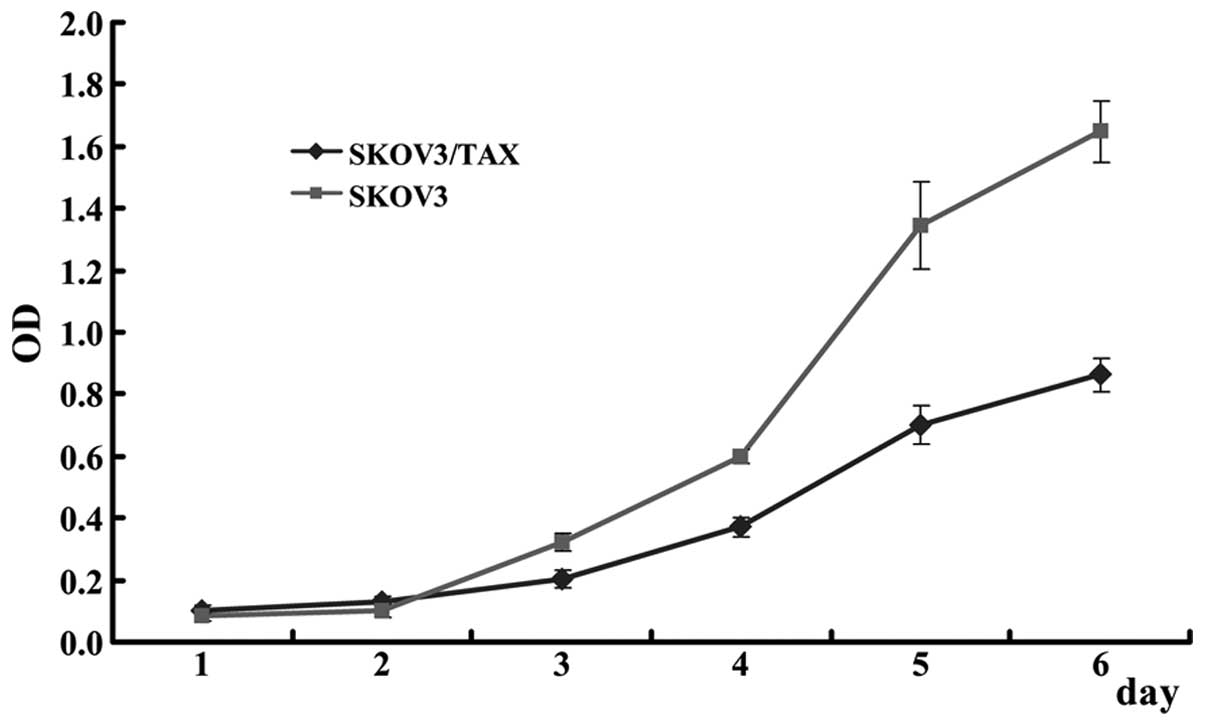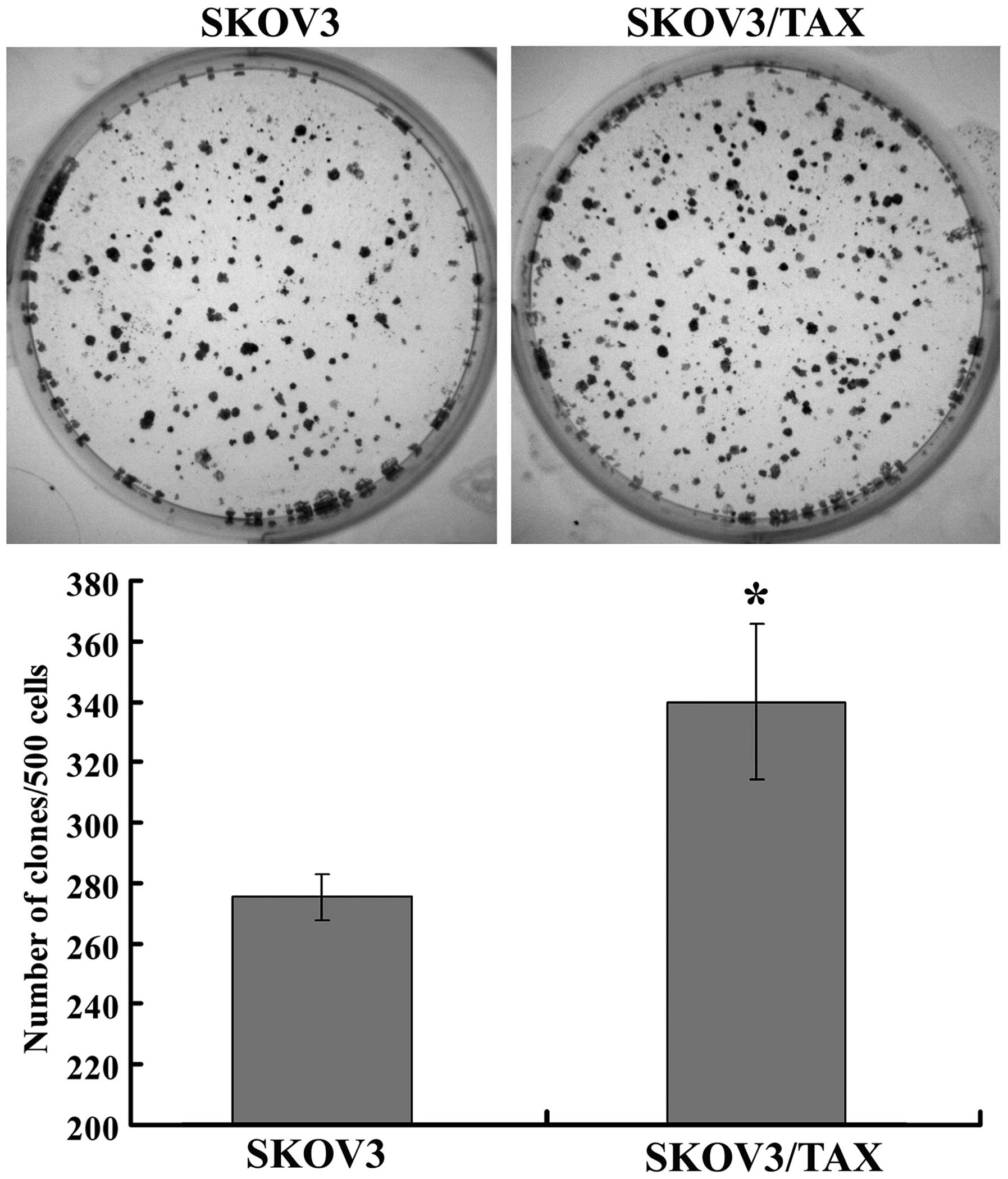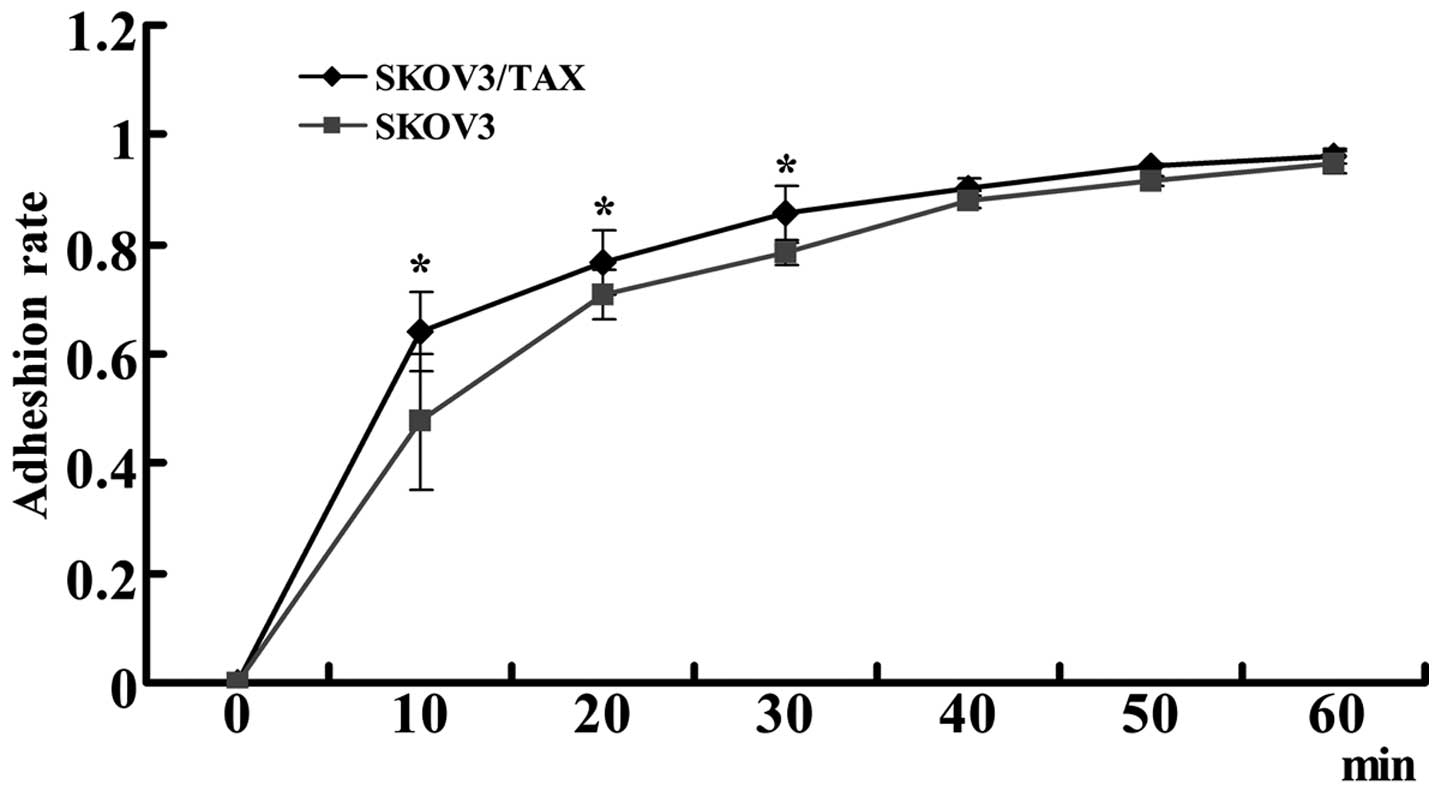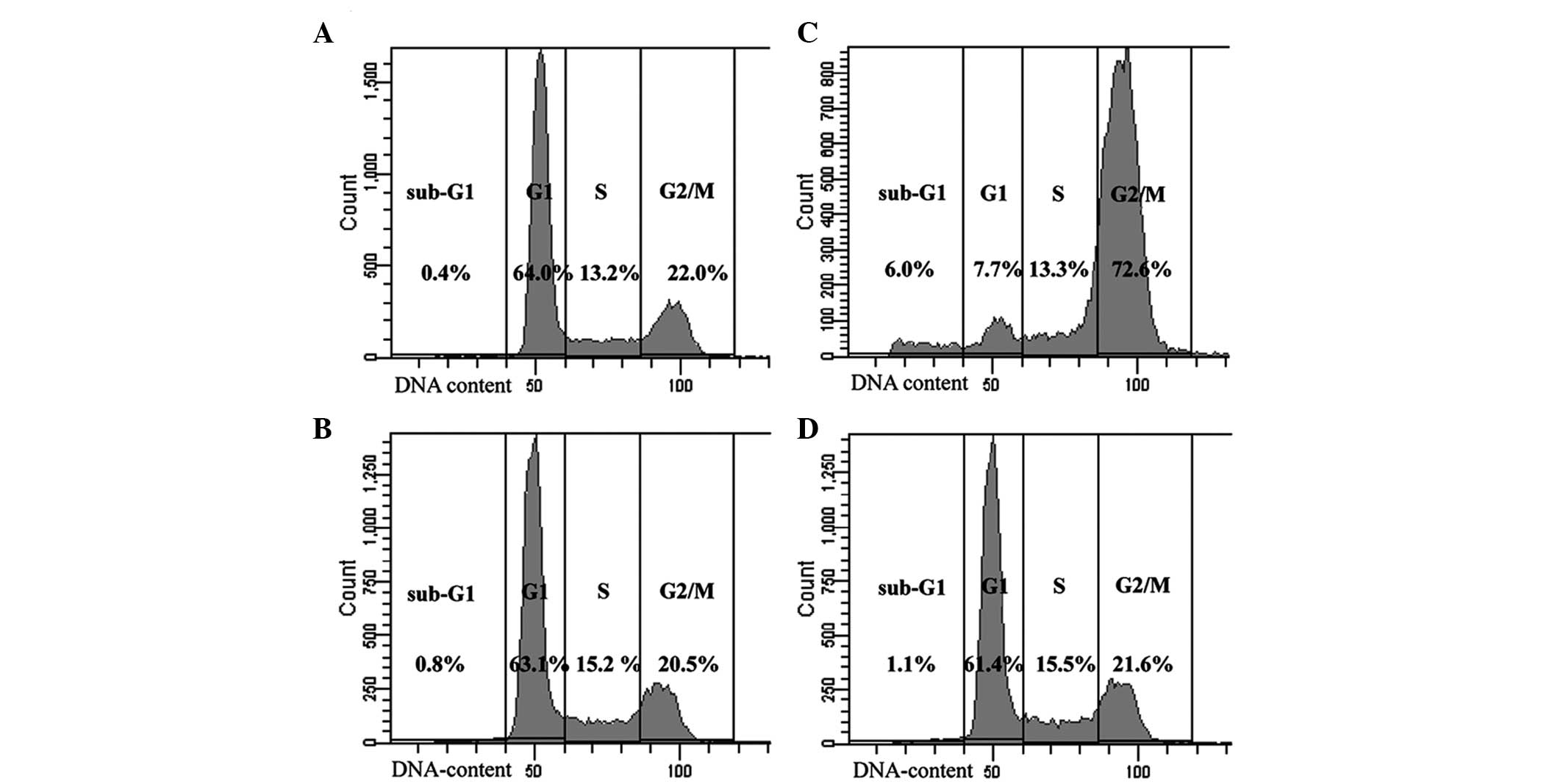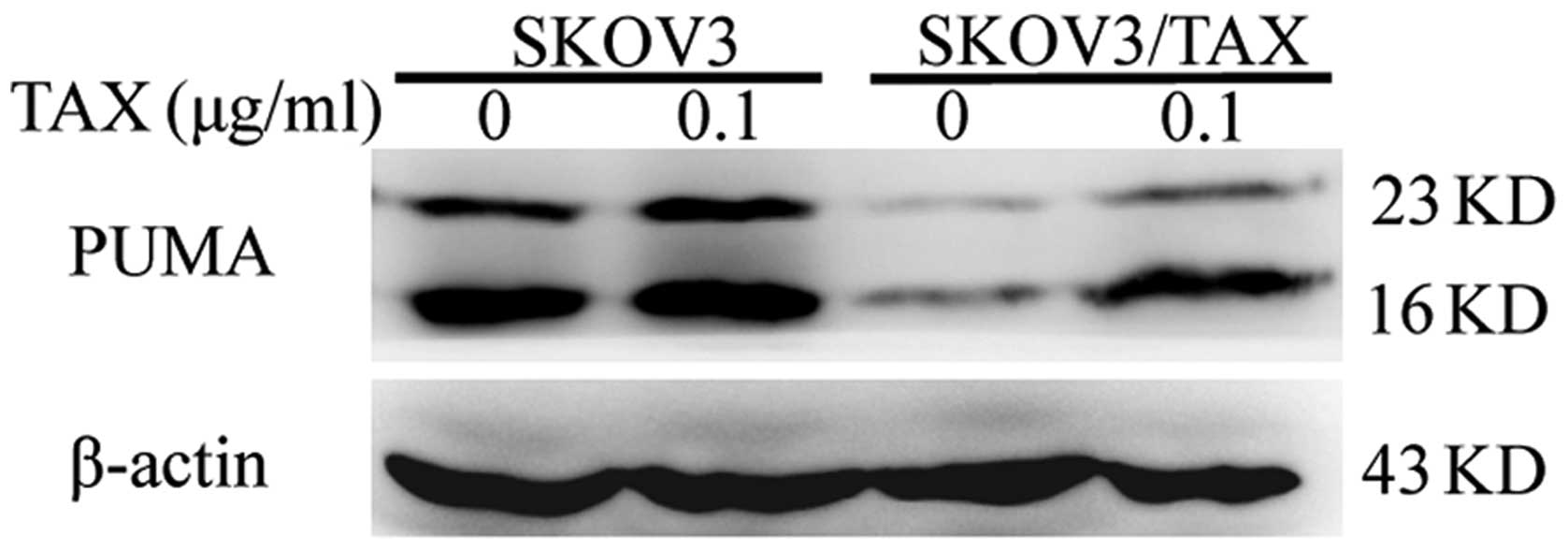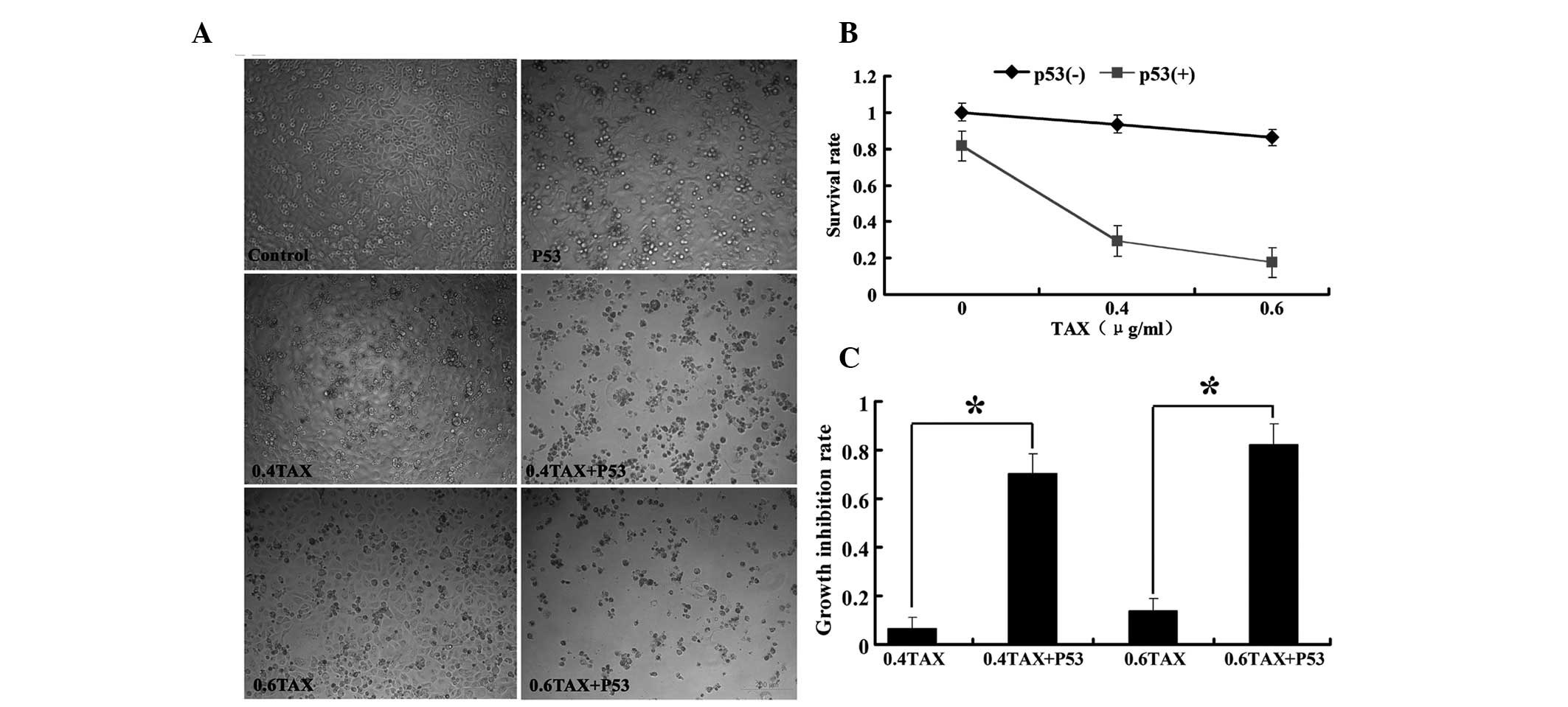Biological characteristics of Taxol‑resistant ovarian cancer cells and reversal of Taxol resistance by adenovirus expressing p53
- Authors:
- Published online on: October 27, 2014 https://doi.org/10.3892/mmr.2014.2784
- Pages: 1292-1297
Metrics: Total
Views: 0 (Spandidos Publications: | PMC Statistics: )
Total PDF Downloads: 0 (Spandidos Publications: | PMC Statistics: )
Abstract
The development of acquired drug resistance is the primary cause of chemotherapy failure in the treatment of ovarian cancer. To examine the mechanism underlying Taxol (TAX) resistance in ovarian cancer and attempt to reverse it, the present study induced a TAX‑resistant ovarian cancer cell line SKOV3/TAX using a gradient concentration increment method. The properties of the resistant cell line were initially investigated by proliferation, colony formation, adhesion and cell cycle analysis compared with control SKOV3 cells. To examine the mechanism, the expression of p53 upregulated modulator of apoptosis (PUMA) was compared between SKOV3/TAX and SKOV3 cells by western blot analysis. An adenovirus expressing p53 (Ad‑p53), alone or in combination with TAX, was used to treat the drug‑resistant ovarian cancer cells SKOV3/TAX. The effects of Ad‑p53 on pro‑apoptosis and the reversal of drug resistance were evaluated using flow cytometric analysis, cleaved‑poly ADP‑ribose polymerase detection, microscopic observation and MTT measurement. Compared with the control cells, the TAX‑resistant ovarian cancer cell line SKOV3/TAX was characterized by reduced sensitivity to TAX treatment, a significantly slower proliferation rate, higher colony‑forming efficiency and higher adhesion ability. However, no significant difference in cell cycle distribution was identified. PUMA, a potent pro‑apoptotic protein, was markedly suppressed in the SKOV3/TAX cells. Ad‑p53 infection stimulated the upregulation of PUMA and re‑sensitized the resistant ovarian cancer cells to TAX by an apoptotic mechanism. Therefore, Ad‑p53 infection is an effective gene therapy method to re‑sensitize the resistant ovarian cancer cells to TAX by restoring the expression of PUMA.



